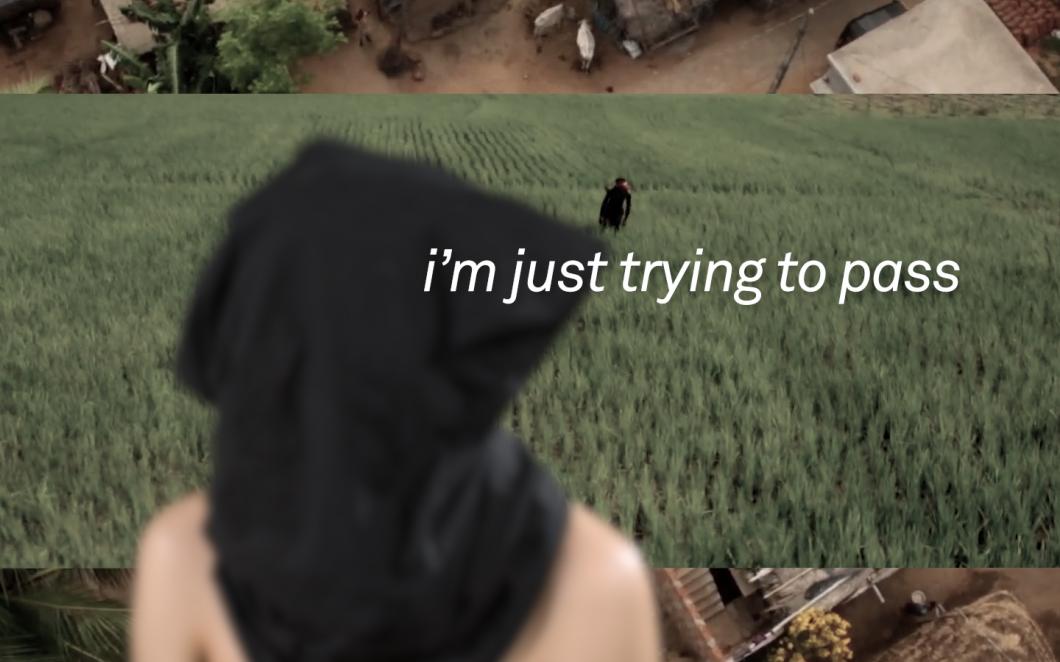
Selected VIII Trailer from videoclub on Vimeo.

Selected VIII Trailer from videoclub on Vimeo.
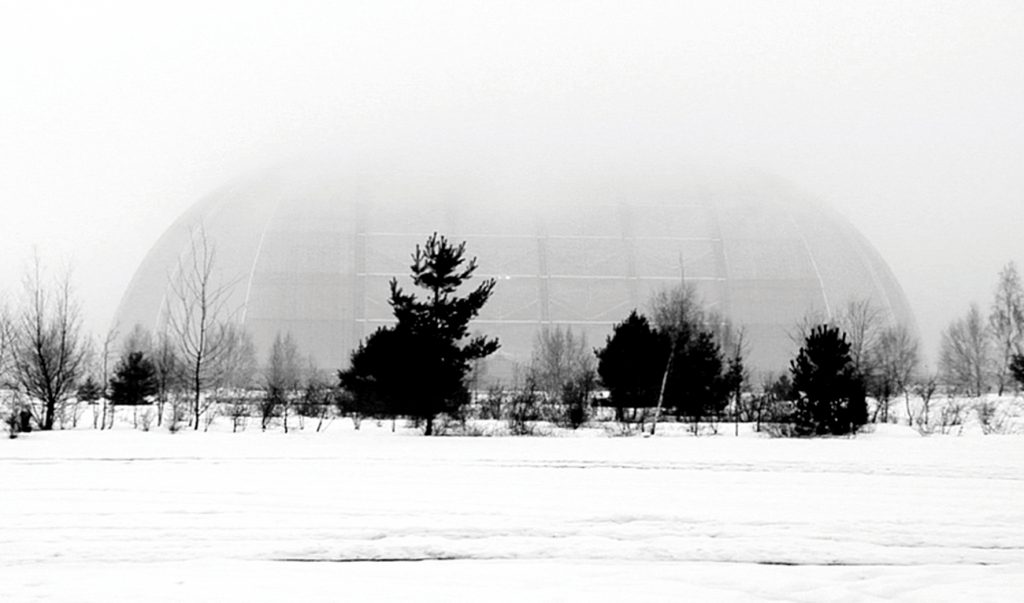
Artists’ film and video from Taiwan’s OSMOSIS Festival from videoclub on Vimeo.


This was my first visit to the Busan Biennale, and having been the day before to the vastly overpopulated Gwangju Biennale, the Busan Biennale curators’ choice of focusing on the work of just 66 artists meant that there was more breathing space to invest the necessary time to properly engage with the works and to reflect on the theme of divided territories.
The biennale was presented across two spaces, clearly demarcating its two main concerns – the Museum of Contemporary Art Busan where the work themed around the Cold War era was presented, and the former Bank of Korea where the more dystopian and futuristic pieces were displayed.
A strong collection of moving image work had been selected for the Biennale, and a clear rationale for how they fitted the curatorial vision. Some of the stand out pieces included:
Hayoun Kwon’s 489 Years, one of the few pieces that employs animation to skillfully create a fictional representation of the DMZ landscape. The detailed computer graphics wonderfully leads the viewer on a journey much as though experiencing a first person shooter game, into a space that divides two nations and has been visited by few Koreans, and that is both simultaneously a deadly war zone and a beautiful wilderness. The piece also exists as a VR work and I imagine would be an excellent way to experience the narrative. Here is an excerpt.
Two pieces by Hito Steyerl were included – Die Leere Mitte (The Empty Centre) from 1998 and ExtraSpaceCraft from 2016. Where the first piece as a single-screen essay film analyses the historical significance of Potsdam Square in Berlin and how migrants have been treated in its gentrification, the second piece employs a multi-screen setting and sculptural seating arrangement in a more playful imagining of how an observatory in Iraqi Kurdistan that is a base for drone surveillance might be one day be employed by a fictitious space agency. Aside from being great works, it was interesting to see how Steyerl’s practice has developed over nearly two decades.
Wanuri Kahiu’s Pumzi felt well situated within the former bank given the theme of government control underpinning the work. Kahiu has crafted an Afrofuturist work about climate change and territorial control with excellent sci-fi styling and computer graphics. As a cautionary tale it looks to a future where water is scarce and dreams are to be suppressed. Trailer can be viewed here.
Ming Wong’s Tales from the Bamboo Spaceship (Part 1) connects historic Cantonese Opera to contemporary science fiction on screen. The piece makes use of the office space of the former bank, where Wong’s research notes are displayed alongside the monitors. The piece critically explores gender, sexuality and racial politics and is a rich introduction to Wong’s interest in identity and cultural authenticity.
Whilst dealing with challenging concerns and the psychological impact of division, war, territory, and conflict, the works in the biennale were unified in their presentation of thought provoking, and at times, playful ideas with an optimistic message at the core.


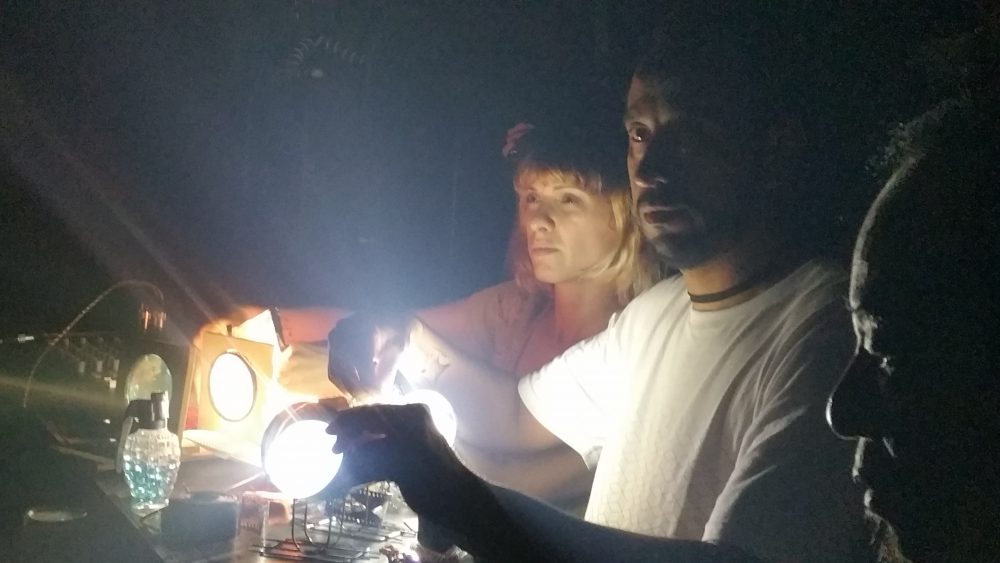

The finale of our Viewfinder programme – a series of visits across East Asia with artists and curators to promote their work – takes us to Taiwan. While there we will be visiting Taiwan Biennial in Taichung, and Taipei Biennial. We will also be visiting one of the latest and most important sites for the arts in Taipei, C-LAB (Taiwan Contemporary Culture Lab), plus we’ll be hosting a dinner with curators from Taiwan to meet with curators from the UK who will be joining us. UK curators on this visit are: Marcus Jack, Laura Leuzzi, John Bloomfield and Anne Duffau.
While there, Jamie Wyld, videoclub’s director, will give a talk at C-LAB about videoclub’s work, comparisons between European and Asian moving image, and the future of artists’ film and video from his perspective.
Viewfinder has been supported by Arts Council England and Creative Scotland.


Selected is a new collection of diverse artists’ film and video, taking place at some of the UK’s leading venues for showcasing artists’ film and video. In November, the final screening of the programme takes place at Vivid Projects, Birmingham.
Nominated by the artists shortlisted for the Film London Jarman Award 2017, Selected brings together some of the best work from early career film and video artists from the UK in a vibrant programme of recent artists’ moving image.
Shortlisted artists for the 2017 Film London Jarman Award – Lawrence Abu Hamdan, Oreet Ashery, Adham Faramawy, Melanie Manchot, Charlotte Prodger and Marianna Simnett – have nominated work by up-and-coming filmmaking talent, to develop an invigorating new programme of work. The screening will be followed by an in conversation with some of the artists.
Artists in the programme include: Kamile Ofoeme, Hannah Quinlan & Rosie Hastings, Gery Georgieva, Jala Wahid, Tim Bowditch, Matthew de Kersaint Giraudeau & Sybella Perry, Imran Perretta and Rob Crosse.
Date and time: Thursday, 22 November 18, 7pm
Price: £2.99
Address: 16 Minerva Works, 158 Fazeley Street, Birmingham B5 5RS – Directions
Web / contact: www.vividprojects.org.uk / info@vividprojects.org.uk / BOOK TICKETS
Afro-Glitch, Kamile Ofoeme, 2017, 6:50 mins
Gaby, Hannah Quinlan & Rosie Hastings, 2018, 8 mins
The Blushing Valley, Gery Georgieva, 2018, 4 mins
Oh Leander!, Jala Wahid, 2017, 4:15 mins
People say it’s fireworks, Tim Bowditch, Matthew de Kersaint Giraudeau and Sybella Perry, 2017, 13:45 mins
brother to brother, Imran Perretta, 2017, 6:36 mins
Prime Time, Rob Crosse, 2017, 20 mins
Produced by videoclub and Film London Artists’ Moving Image Network. Supported by Arts Council England and Film London.
Film London Artists’ Moving Image Network
Film London Artists’ Moving Image Network (FLAMIN) supports London-based artists working in moving image, working in partnership to deliver a comprehensive programme including production award schemes, regular screenings, talks and events, as well as the prestigious annual Film London Jarman Award.
www.filmlondon.org.uk/flamin


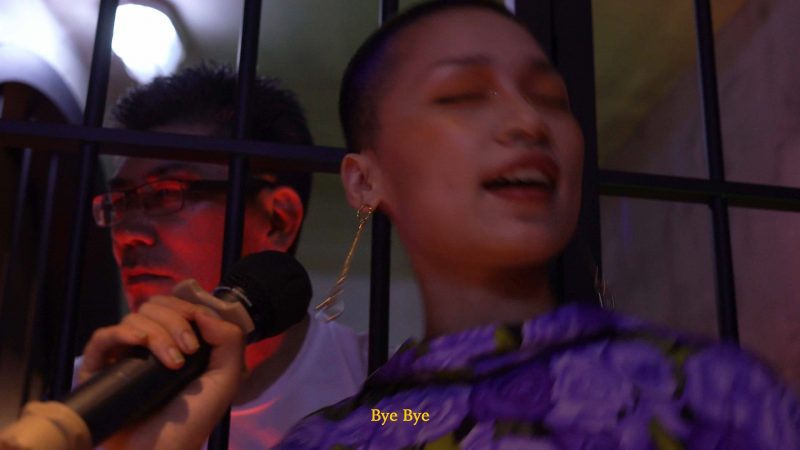

Streets Paved with Pearl shows a selection of three works, two created by artist Di Fang, and a third by Di Fang in collaboration with Jiu Society, an artist group based in Shenzhen, China. The exhibition is taking place at Phoenix in Leicester, curated in collaboration with videoclub and International Art + Science Research Institute, Shanghai.
Di Fang’s work explores the impact of rapid economic growth in the Pearl River Delta region, which has taken place over the past two decades. From cheap labour exports to foreign economic trade; from Hong Kongese, Macanese and Taiwanese investment to real estate development; from being “The World’s Factory” to high-tech industry exports and innovation, the Pearl River Delta has changed fundamentally. Today, there are high expectations in the Pearl River Delta region that the Greater Bay Area of China will become the fastest growing economic engine in the world, and a powerful cultural presence.
In the blink of an eye, the Pearl River Delta has been integrated into the global economic system, attracting migrants from all walks of life into the country – farmers, blue- and white-collar workers, technologists, and an enormous influx of businesspeople from across the globe. With its political, social and economic changes, this cultural melting pot is becoming more and more complicated and mixed all the time.
In the three works in Streets Paved with Pearl, Di Fang looks at the stories of migrants who have moved to China, and across China to find better economic prosperity. His films look at the experiences of those migrants, the issues they face and what migration means to them. He also explores the impact of growing cities on society and how we have – or haven’t – adapted to them.
Address: Phoenix, 4 Midland Street, Leicester LE1 1TG
Dates: 24 November – 23 December 2018
For details: www.phoenix.org.uk / 0116 242 2800
A talk by Di Fang about the exhibition and his work will take place at Phoenix on Saturday, 15 December – see here for details.
In Destination to the Promised Land, Di Fang focuses on African migrants’ experiences in the city of Guangzhou through a series of interviews, which explore issues of social stratification, economic ambition and what home means.
Hyundai tells the story of Tingzi, a woman who migrated from Jiangxi Province to work in Shenzhen; Tingzi’s car is stolen by a new friend she met at a motor club – following the experience Tingzi is bereft and feels like her place as a single woman in Shenzhen, and as a worker, has been deceptively taken away, until, by surprise, her Hyundai is returned.
360° Without Dead End, Jiu Society (founded by Di Fang, Ji Hao and Jin Haofin in 2015), shows everyday life in cities in the Pearl River Delta, through the constant turning of a camera on a hula hoop. The hula hoop turns 360°, capturing the urban surroundings both in- and outdoors, reminding us of the constant life that exists in the city.
Di Fang is a Chinese artist based in Shenzhen (China) and Port Moresby (Papua New Guinea). His works convey not only the evolution of urbanisation, but also his political attitudes. He is interested in urban practice, global new references, and views himself as a tourist in his videos and multimedia installations. His work uses multiple vocabularies to investigate the intertwining experiences of city life, and reflects on the rapid and chaotic changes that affect today’s society.
Fang has exhibited in many places internationally, including: Shanghai Biennale (Shanghai, 2018), Julia Stoschek Collection (Düsseldorf, 2018), Vanguard Gallery (Shanghai, 2017), Lost in Shenzhen presented by Jiu Society at 33 Art Space (Shenzhen, 2016), Delaware Center for the Contemporary Arts (Wilmington, 2013), The Museum of Moscow (Moscow, 2014), Maryland Art Place (Baltimore,2013) and Connersmith Gallery (Washington D.C, 2013).
Jiu Society consists of three members, Di Fang, Ji Hao and Jin Haofan. The three young artists were all born and raised as part of a new generation of Shenzhen citizens, in what they refer to as an ‘immigrant city’. They are the experimental products of Reform and Opening, and also sons of dispersed culture. Shenzhen to them is not anymore what it was to their parents – a place to make money. They live and create in Shenzhen, their own city, and, by using their young perspectives, they reconsider their city and make themselves heard.
Streets Paved with Pearl has been curated and produced by Phoenix, videoclub and International Art + Science Research Institute (AS). Streets Paved with Pearl is part of ON AIR, a collaboration between videoclub and AS, enabling cultural exchange across the UK and China. It has been supported by Arts Council England.



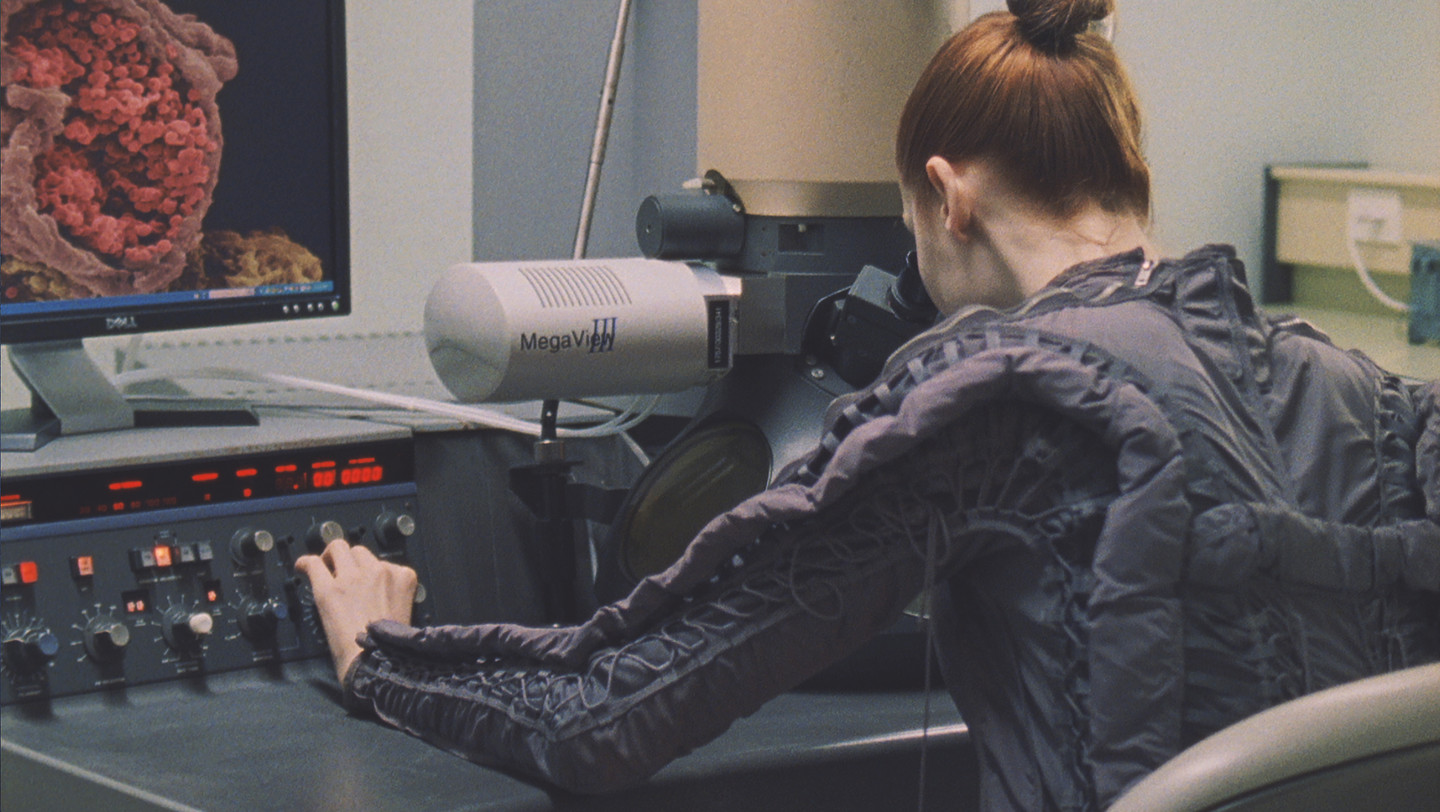

In a world teeming with data it’s easy to be overwhelmed with the flow of information, and to feel oversaturated by its extent. Nature as Data brings together a series of works that offer opportunities to unpack and understand the immense amount of material we experience through digital technologies and interfaces every day. Through this exhibition we will show artwork that explores how human beings are analysing and enquiring into nature using digital and analogue technologies, to produce artworks that allow us to see nature in new and illuminating ways.
Nature as Data includes works by artists who are interpreting data from nature, this includes how artists are collecting data from nature and creating exciting, captivating work that allows us to engage and understand. Other artists are creating new data, gathering material, and producing fascinating and perplexing artworks that attempt to unravel the impact data and technology, and our part in participating with it, are having on ourselves and humanity.
Artists in the exhibition include: Anne Haaning, Patrick Hough, boredomresearch, Lawrence Lek, Larry Achiampong, David Blandy, Sebastian Buerkner, Semiconductor, Suki Chan and Ursula Mayer.
For the opening on 22 September, acid technoise artist, Ewa Justka will play a set as part of the opening of Nature as Data.
On 10 November, artist Aura Satz will give a performance as part of the second opening of the exhibition, to coincide with the opening of Shanghai Biennale.
自然作為數據
通過主題展覽,我們將展示有關社會,城市進程的藝術作品。
探索人類如何利用數字技術分析和探究自然,製作出讓我們以新的和有啟發性的方式看到自然的作品。
數據存在於我們周圍的一切。這是在我們的DNA,在我們的頭腦中,在大自然的數據中。
作為數據的自然將通過數據透鏡來解讀藝術家對自然環境的理解,包括人的思想和身體,從而打開大自然的景觀。
Exhibition openings:
5pm, 22 September 2018, 6pm performance by Ewa Justka
8pm, 10 November 2018, 8:30pm performance by Aura Satz
Exhibition dates: 22 Sept – 20 Dec 2018
Address: Jing’an Sculpture Park’s venue, 128 Shimen Er Lu, near Beijing Xi Lu
静安雕塑公园艺术中心, 静安雕塑公园, 石门二路128号, 近北京西路
The exhibition takes place as part of Jing’an International Sculpture Project, and is a collaboration between videoclub and International Art + Science Research Institute in Shanghai.
The project has been supported by Jing’an local authority in Shanghai and Arts Council England.



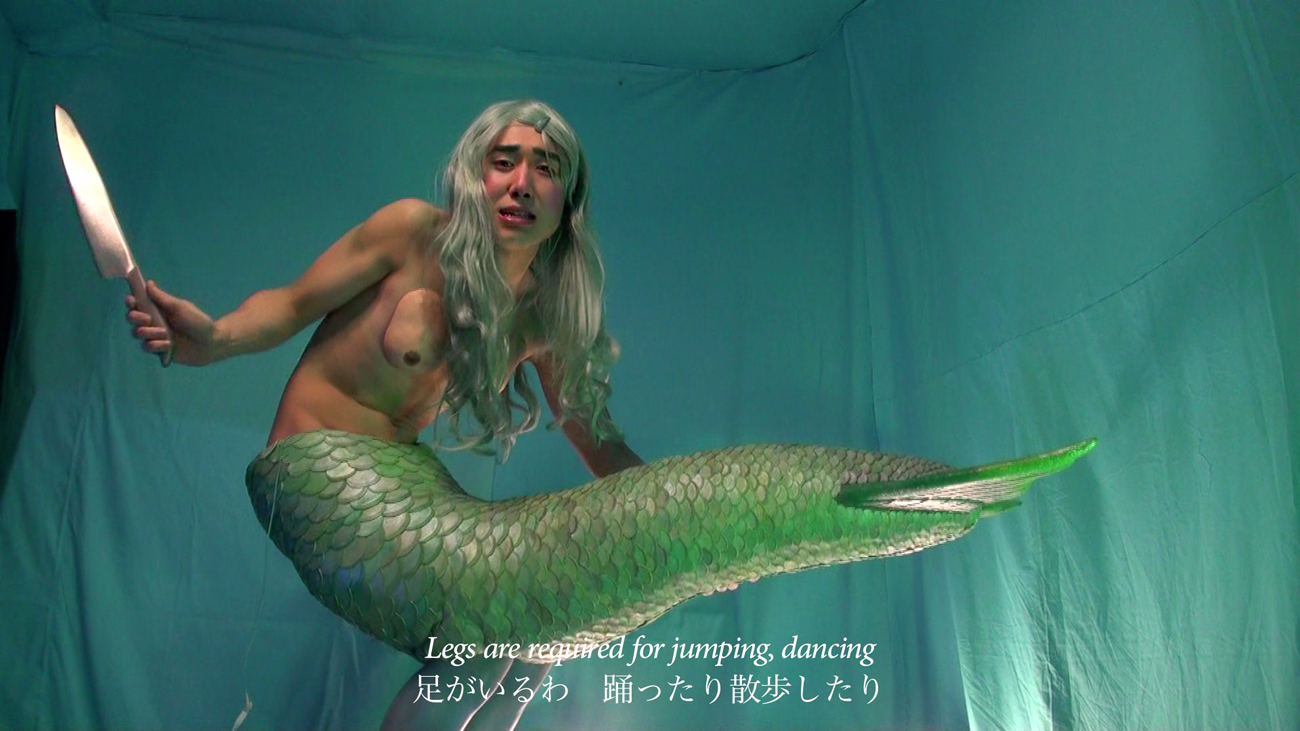

ボディスケープ:日本のアーティストによる新しい映像作品
Bodyscapes is a collection of new films by Japanese artists whose use of the body is central to their work – either as a landscape, a political metaphor or method of expression – the body acts as a vehicle and subject to communicate ideas.
In Fuyuhiko Takata’s Little Mermaid-inspired Cambrian Explosion, Takata’s character – Princess Mermaid – attempts to create his own legs by bloodily sawing his tail in half. Aya Momose attempts to speak and converse with a goat, to share feelings of forgiveness and pain following the commitment from one body to another in her film, To Cuddle a Goat, a Poor Grammar Exercise. And in The Educational System of an Empire by Hikaru Fujii, the artist asks a group of young South Korean’s to reenact the tyrannical actions of colonial Japan upon the nation of Korea.
All five films are UK premieres.
– Bivalvia: Act I, Yu Araki, 2017, 20:20mins
– Cambrian Explosion, Fuyuhiko Takata, 2016, 2:35mins
– To Cuddle a Goat, a Poor Grammar Exercise, Aya Momose, 2016, 13:50mins
– The Educational System of an Empire, Hikaru Fujii, 2016, 21 mins
– Daytime, Yuichiro Tamura, 2017, 2:50 mins
Total runtime: 61 mins.
Date and time: 4 October 2018 at 6:30pm doors and bar, 7pm start
Price: £3
Address: Fabrica, 40 Duke Street, Brighton BN1 1AG
To book tickets: www.fabrica.org.uk / 01273 778646
Date and time: Friday, 25 January 2019 at 8pm
Price: FREE – no booking required
Address: 4 Midland Street, Leicester LE1 1TG
Web / contact: www.phoenix.org.uk / 0116 242 2800
Date and time: Thursday, 28 February 2019 at 6pm
Price: FREE – please reserve your ticket here
Address: 13-14 Cornwall Terrace 4QP, Outer Cir, London
To book tickets: http://dajf.org.uk/events / 020 7486 4348
Date and time: Saturday, 23 March 2019 at 4pm
Price: FREE – no booking required
Address: Mill Bay Road, Folkestone, CT20 1BN
Web / contact: https://www.strangelovefestival.com/2019-programme/bodyscapes / 01303 760750
Date and time: Wednesday, 10 April 2019 at 6:30pm
Price: FREE – no booking required
Address: Gorvy Lecture Theatre, Dyson Building, Riverside, 1 Hester Rd, London SW11 4AN
Trailer:
Bodyscapes – new film and video from Japan from videoclub on Vimeo.
Bodyscapes has been curated by Moritz Cheung, videoclub’s curator, and is supported by Daiwa Anglo-Japanese Foundation and Arts Council England.
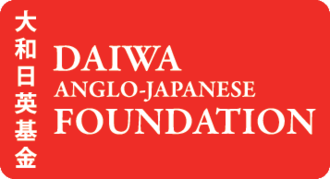

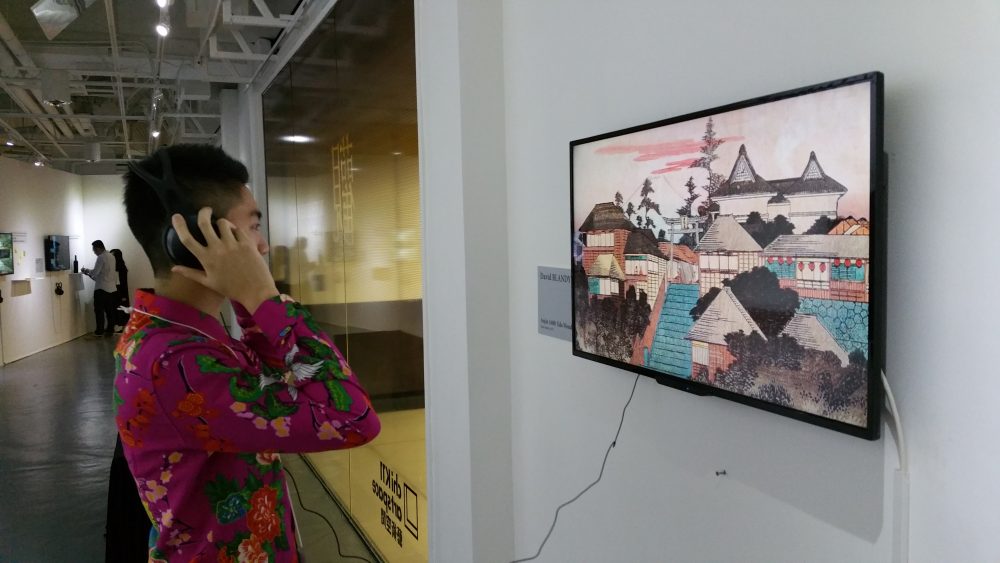

About Viewfinder
videoclub has been awarded funding for Viewfinder from Arts Council England and Creative Scotland to deliver a series of visits across E Asia with artists who work with moving image. This is with the aim of promoting those artists to local audiences and to enable artists to gain contacts, which can lead to earning income, through such as sales, commissions, exhibitions, screenings and residencies. We will be visiting cities across China, Taiwan and S Korea throughout 2017 and 18.
Open call details
As part of this project we are opening up the project to five independent curators – this includes part-time employed and freelance practitioners – who work with artists’ moving image. This can be a partial interest in including artists’ moving image in exhibitions/projects or fully engaged with developing projects with film and video.
There are four places supported by Arts Council England and one place supported by Creative Scotland; to be eligible curators need to be based in England or Scotland.
Visit dates: 16 – 22 October 2018 (arrive back in UK on 23 October).
What you’ll get as part of this opportunity
Eligibility
How to apply


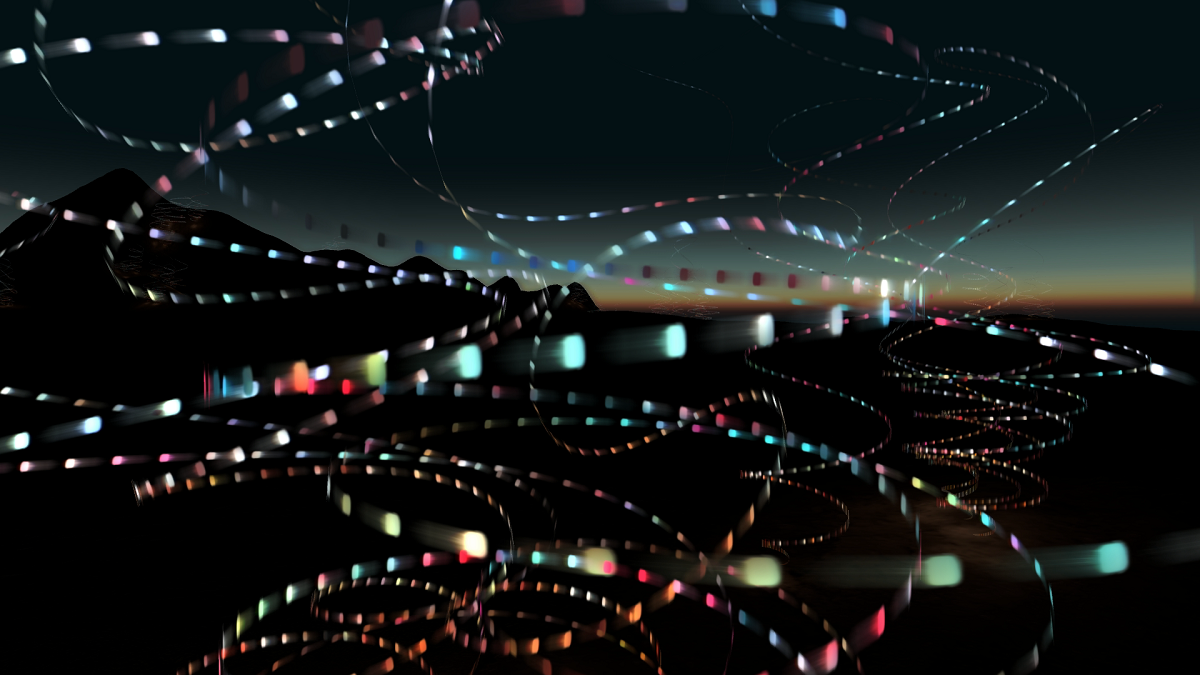
 AfterGlow (Susceptible, Exposed, Infected, Recovered), boredomresearch, 2016
AfterGlow (Susceptible, Exposed, Infected, Recovered), boredomresearch, 2016
Seeing Systems is a new curated programme exploring some of the organic and non-organic systems that invisibly impact on our lives. Through a series of short but impactful art films, this programme visualises the patterns, structures and habits that surround us in our everyday lives; from the ubiquitous flight path of mosquitos or the neurological grid of perception to almost superstitious paranoia surrounding invisible transmission of germs and viruses between us or the oblique tracks of migration and dispersal, belonging and difference.
This collection of moving image works by UK-based artists has been curated and presented in collaboration with the ArtScience Museum in Singapore, and will be presented at their venue during August 2018.
Artists in the programme include: boredomresearch, Suki Chan, Anne Haaning, Lyndsay Mann, Ursula Mayer, Naheed Raza and Louise K Wilson.
Seeing Systems film programme will be showing at ArtScience Museum, as part of Art Science on Screen, between 3 and 31 August on a loop between 11am and 6:30pm in the Expression Gallery, Level 4.
16 August 18, 8pm: Ewa Justka will perform a set at ArtScience Museum, in the Expression Gallery, Level 4
18 August 18, 1:30pm: Conversations event – four of the artists from the programme will talk about their work followed by a Q&A, the artists speaking are: Ursula Mayer, boredomresearch, Ewa Justka and Lyndsay Mann. Expression Gallery, Level 4.
18 August 18, 5pm: A screening of all the films will take place before and after the Conversations event. Expression Gallery, Level 4.
boredomresearch, AfterGlow (Susceptible, Exposed, Infected, Recovered), 2016, 4’36”
Suki Chan, Lucida, 2016, 22’6″
Anne Haaning, KhoiSan Medicine, 2013, 12’28”
Lyndsay Mann, An Order of the Outside, 2016, 19’36”
Ursula Mayer, Atom Spirit, 2016, 17’34”
Naheed Raza, Silk, 2013, 8’30”
Louise K Wilson, Nurrungar, 2006, 2’05”
Louise K Wilson, Woomera, 2006, 1’42”
Full programme with details about the artists and all events can be viewed here: Art Science on Screen – Seeing Systems programme.
ArtScience Museum is an iconic cultural landmark in Singapore. Our mission is to explore where art, science, culture and technology come together. It is here at the intersection of art and science that innovation and new ideas are formed. We like to say “it’s where the future is created”.
Our striking lotus-inspired building, designed by Moshe Safdie, features 21 gallery spaces spanning nearly 5000m2. Since opening in February 2011, we have held large-scale exhibitions by some of the world’s best known artists including Leonardo da Vinci, Salvador Dalí, Andy Warhol, Vincent Van Gogh and M.C. Escher.
In addition, we have presented significant exhibitions that explore aspects of science including big data, particle physics, paleontology, marine biology, cosmology and space exploration.
The museum has staged international exhibitions in partnership with renowned museums and galleries from around the world including the British Museum and Science Museum in London; the American Museum of Natural History, New York; the Biblioteca Ambrosiana, Milan; the Mori Art Museum, Tokyo; the Australian Centre for Moving Image, Melbourne and many other institutions. We also originate and produce exhibitions in-house and run a full programme of education, events,
performances, screenings and learning opportunities for a wide range of audiences.
ArtScience Museum is owned and operated by Marina Bay Sands. It employs approximately 50 people directly, and is supported by many more, within the larger corporate structure of Marina Bay Sands.
How to get to the Museum: ArtScience Museum is in Marina Bay Sands, along the Marina Bay waterfront and easily accessible via public transport and car. Once at Marina Bay Sands, the Museum is located along the north Promenade, within walking distance from The Shoppes at Marina Bay Sands and the Helix Bridge. The Museum’s main lobby is on the ground level. For more info visit the ArtScience Museum site.
Seeing Systems at ArtScience Museum is part of our Viewfinder programme. videoclub has been awarded funding for Viewfinder from Arts Council England and Creative Scotland to deliver a series of visits across E Asia with artists who work with moving image. This is with the aim of promoting those artists to local audiences and to enable artists to gain contacts, which can lead to earning income, through such as sales, commissions, exhibitions, screenings and residencies. We are visiting cities across China, Taiwan, Singapore and S Korea throughout 2017 and 18.
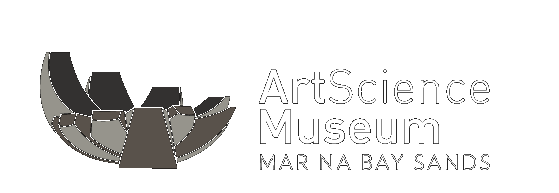


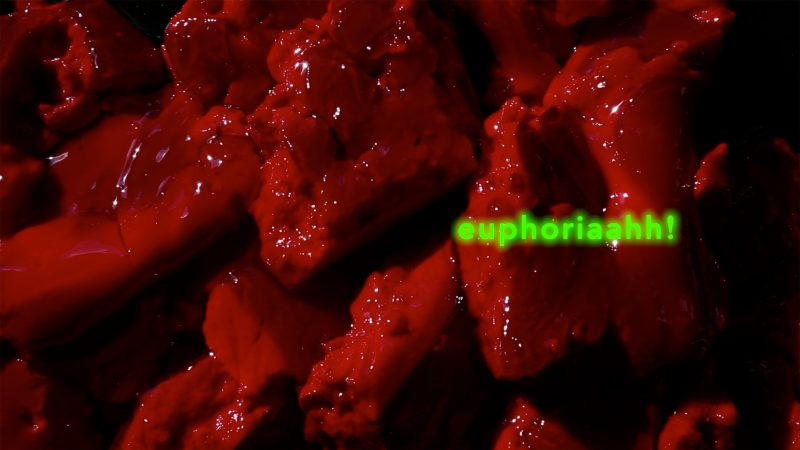

‘Young man!’ booms the voice of a man in uniform. Disregard your age and gender; he’s talking to you and, with a realization too sudden to sink, you know it. ‘There’s no need to feel down’ he continues ‘I said young man, pick yourself off the ground.’ You can breathe a sigh of relief — he’s doing his good-time-cop routine. You are assisting in our celebrations – not under arrest at this time.
Eight years before the release of YMCA by Village People, Louis Althusser used the scenario of being hailed by a cop in the street, addressed as ‘Hey, you there’, to illustrate his theory of interpellation — the process whereby the individual is made a subject by ideology. It probably never occurred to him that such interpellation could spur party goers to enthusiastically contort their own upper bodies into an unmistakable sequence of letters. His analysis might have benefitted from revision in light of this.
YMCA makes two brief but significant appearances in the Selected 8 screenings. It’s in the first of three movements in Gaby by Hannah Quinlan and Rosie Hastings, a film broadly about the relations between queer culture, urban space, policing and dance music. it accompanies footage of police officers at a Pride parade, not in their usual capacity but as participants; as the LGBTQ friendly face of the force. Crucially, though, they remain on duty and will presumably act accordingly, should they feel the need. Playing through the opening verses as a vocal edit only, Gaby’s YMCA is heard in its most stentorian aspect first. When a backing track does commence, it’s dystopian industrial tinged techno, all boots in lockstep, dissonant with the buoyant gregarious brass we’re used to.
YMCA pivots elegantly between Gaby and Prime Time, a tenderly but tenaciously voyeuristic people watching exercise by Rob Crosse. In the latter, it’s heard in the bar of a cruise ship with a contingent of late middle aged gay men on board. The camera lovingly lingers over these men; their paunches and thickets of wiry silver body hair, but also their fastidious ticks and routines, like shaving around a carefully contoured beard, absent-mindedly faltering mid drink order or fidgeting nervously before taking to the dancefloor.
The erotic languor and sensitivity of Prime Time couldn’t be more distant from the punitive institutional space of Brother to Brother by Imran Perretta. It presents the official mandate to look, that is to profile, as routinely ideological, vestigially colonial. Like the artist, the customs officer who carried out a search that partly inspired the film was a man of South Asian extraction — a cruel irony, especially given that the second parallel movement within the film is the mobile, remote controlled colonial gaze of the drone. While asymmetrical trade/war runs rough-shod around the globe, people of colour are left to police each other in locked rooms at airports.
The subject of such a colonial gaze negotiates some paradoxical demands. They must split into simultaneous visibility and invisibility, must vanish from all elevated forums of public life and national consensus. At the same time, they must be thoroughly observable, knowable and legible. ‘If we examine the process of understanding people and ideas from the perspective of Western thought, we discover that its basis is the requirement for transparency’ said Edouard Glissant. A key term in his lexicon was opacity; he insisted upon the right to it.
Afro-Glitch by Kamile Ofoeme suggests a black opacity as paradoxical as the scrutiny it counters; the paradox of making oneself unseeable in a state of the most baroque ostentation. The artist vigilantly holds and follows my gaze, draped in printed fabrics that look like ethnographic dazzle camo for confounding the focus of surveillance technology. He also wears a gold chain with small pendants of a decorative frame — the kind that could frame a classical European painting or a mirror or nothing. Though a baby pink ski mask largely obscures his face, I still read fatigue in his heavy-lidded eyes. He could use a break, but as long as I look at him, he’ll look back.
Maybe Gery Georgieva and Jala Wahid propose similar opacities or illegibilities in The Blushing Valley and Oh Leander! respectively. To describe The Blushing Valley as a pastiche of Carnival Queen style ceremonies common to any number of world cultures is probably adequate but shuts it down somewhat. The artist performs a feminine archetype in Balkan pop-folk creole. A common geopolitical imaginary of the West registers land with Black Sea shores rather mysteriously, voided by the falling Soviet Bloc unreplaced by something similarly monolithic, somehow both Europe and the Middle East, neither entirely one nor the other. The Blushing Valley is wise to this uncertainty.
Oh Leander! creates the impression of being both a formidable mistranslation or distortion, and loyalty at the same time. It takes as its soundtrack a heavily manipulated Kurdish ballad, ‘translated’ (with evident and conspicuous licence) into ecstatic, image-rich prose that’s equally sensual and absurd. The backdrop looks like meat sinking into a hidden grinder. if there’s no grinder, perhaps it’s just being massaged by unseen hands, and if not meat then maybe it’s some heavily rendered meat product like spam or dog food, already worked over, already denatured, distant from the ever-retreating origin. Not only can I not measure that distance, I enjoy my disorientation, but it’s surreptitiously barbed. To an orientalist reading, the name for this seductive lack puts me on a deeply problematic footing, though not without good cause. The name is mystique.
The distance is less abstract in People Say It’s Fireworks by Tim Bowditch, Matthew de Kersaint Giraudeau and Sybella Perry. ‘Living at a fair distance from the objects of your desire is not a rich life’ rues the narrator ‘so one must bring together things that can stand in their place.’ The things, in this instance, are a fabrication of Mount Vesuvius and a re-enactment of its eruption, which appears to take a most rudimentary coke-and-mentos level science as its motive power.
In context, a striking shift has occurred here. The work discussed thus far largely coheres around people looking at (reading, monitoring, profiling) other people. This film is ostensibly about people looking at an inanimate thing. However, optics have subtly re-situated themselves. Whether it’s down to the ceremonious narration or the panoptic spatial organisation of the event, there’s a palpable and increasing sense as spectators throng around the volcano that it’s preparing to look back.
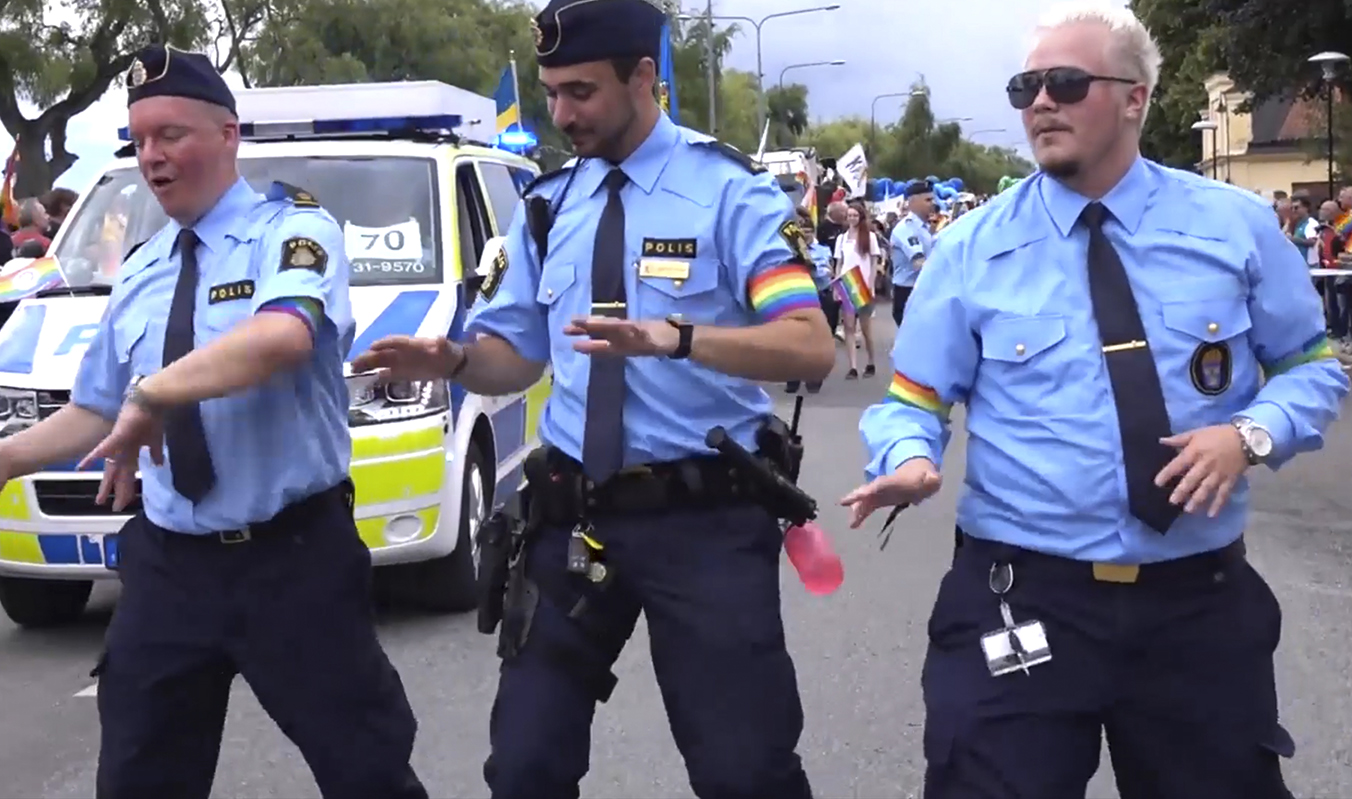

Since 2011, videoclub’s Selected programme has been showcasing witty, thought-provoking video art from Britain’s most exciting early career filmmakers. Now in its eighth edition, Selected is full of works that feel politically urgent in their choice of subject matter yet remain refreshingly playful in their treatment of it. For such a long running programme this is surely an achievement, perhaps attributed to its formatting where Film London Jarman Award recipients nominate artists from which videoclub and FLAMIN curate the final show. Included this year are films by Kamile Ofoeme, Gery Georgieva, Jala Wahid, Tim Bowditch, Matthew de Kersaint Giraudeau & Sybella Perry and Rob Crosse, while Imran Perretta’s brother to brother and Hannah Quinlan & Rosie Hastings’ Gaby particularly standout.
Based on his experience of being detained at a UK airport under anti-terror laws, Imran Perretta’s brother to brother seeks to challenge the nation state and the manner in which it marginalises certain groups of citizens.
The film begins in a studio, frame filled with a green-screen backdrop, and sitting in the middle a naked brown body recoiling from an unseen oppressor. Unknown to viewers the body is in fact Perretta’s own, and throughout the following seven minutes he remains a consistent presence as the green screen flickers between images of what look like the Ganges River Delta. Shot predominantly by drone and processed with a certain high definition artificiality, these images – alongside a text-based account of his detention – call to mind Michel Foucault’s notion of Biopower and state use of new imaging technology to reinforce colonial hierarchies first developed under the British Empire.
Hannah Quinlan and Rosie Hastings also employ personal narrative as a vehicle to engage with broader political contentions. In their film Gaby, the narrative centres around their friend’s experience of dating a policeman and how LGBTQ+ culture is internalised within the logic of late capitalism and its systems of control.
The film itself is split into three chapters; found footage of police dancing to YMCA at pride festivals around the world, clippings of a newspaper article extolling the efforts of gay men in gentrifying hitherto ‘undesirable’ (aka Black) areas of New York City, and an animated sequence of the eponymous Gaby’s story.
Technically, both films are extremely well-constructed and display a fidelity of craft sometimes lacking in artists’ film and video. This is also the case for Jala Wahid, Tim Bowditch, Matthew de Kersaint Giraudeau & Sybella Perry whose films make great use of CGI and sound respectively.
Overall, videoclub and FLAMIN have assembled a fascinating collection of films, each with accessible yet intelligent politics. This is clearly a group of artists eager to make their mark on a precarious world and Selected VIII gives us a brief glimpse at how it might look.
Go to the Selected VIII page for details about screening dates and venues across the UK.

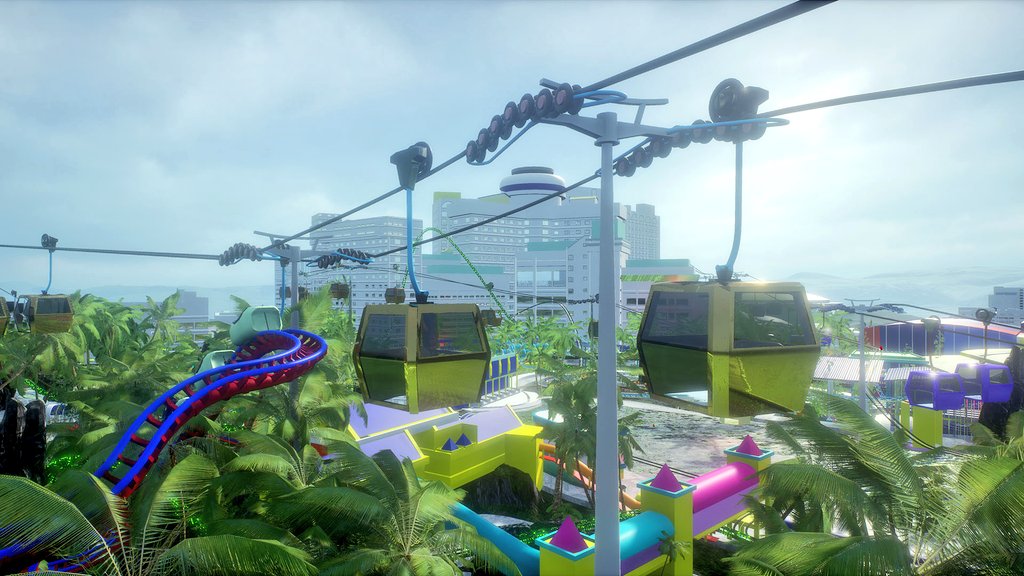

In its fourth year, Both Sides Now examines new models of making moving image influenced by internet and videogame culture. Showing work made in the past four years, the programme explores new aesthetics, visual languages and digital forms that are native to the internet, and that comment upon local and global politics, society, globalisation and science.
Both Sides Now presents contemporary and historical film and video work from the UK, Hong Kong and China, curated by Isaac Leung of Videotage and Jamie Wyld of videoclub. The films explore developments within the culture and society of Hong Kong and China over the past three decades, including work which reflects on the ongoing dynamics of cultures in Hong Kong, China, and the UK.
Play Station, Lawrence Lek, 2017, 7’45”
Selachimorpha, Joey Holder, 2017, 5’10”
AfterGlow (Susceptible, Exposed, Infected, Recovered), boredomresearch, 2016, 4’36”
Divisional Articulations, Max Hattler, 2017, 4’33”
Weresheglanspertheere, Sebastian Buerkner, 2014, 5’06”
The Afterlife of Rosy Leavers, Angela Su, 2017, 14’35”
Another Day of Depression in Kowloon, IP Yuk-Yui, 2012, 15’03”
KungFU Disco New, Jeff Lee, 2016, 1’39”
Copy is Right!, Joseph Chen, 2016, 3’27”
Windows on the World (Part 1), Ming Wong, 2014, 3’02”
Date and time: Wednesday, 30 May 2018 at 7pm
Price: FREE
Address: Duddell’s, Level 3, Shanghai Tang Mansion, 1 Duddell Street, Central
To book tickets: RSVP
Videotage is a leading non-profit organisation in Hong Kong focusing on the presentation, promotion, production and preservation of video and media art, serving artists in the expanding technological art and culture network. Since 1986, Videotage has developed itself from an umbrella for media artists, to a network of media art and culture for cross-disciplinary cultural productions, and platform to facilitate international exchange.
![]()
Both Sides Now 4 has been supported by Arts Council England and Hong Kong Arts Development Council.


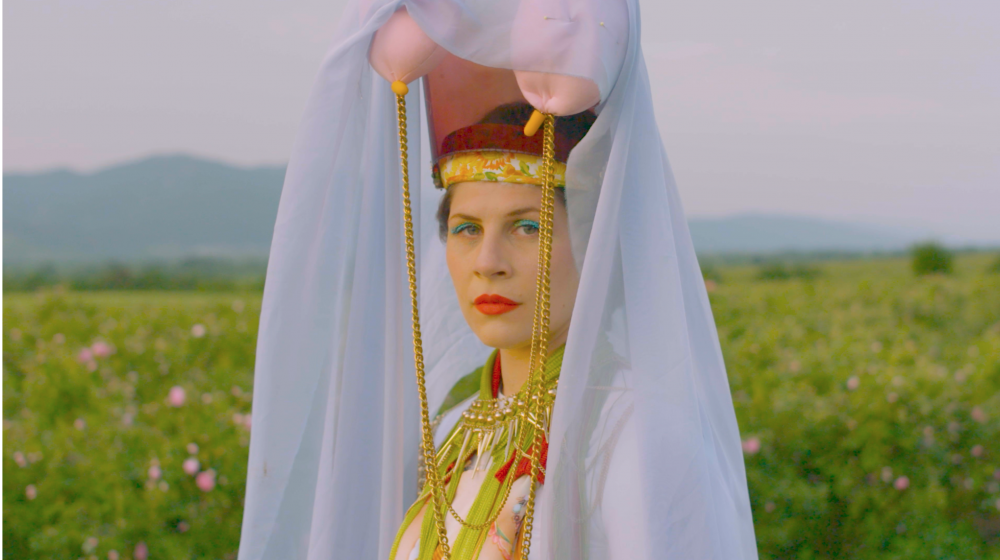
(Full venue dates and details below the programme)
Selected is a new collection of diverse artists’ film and video touring the UK in April-July 2018, taking place at some of the UK’s leading venues for showcasing artists’ film and video.
Nominated by the artists shortlisted for the Film London Jarman Award 2017, Selected brings together some of the best work from early career film and video artists from the UK in a vibrant programme of recent artists’ moving image.
Shortlisted artists for the 2017 Film London Jarman Award – Lawrence Abu Hamdan, Oreet Ashery, Adham Faramawy, Melanie Manchot, Charlotte Prodger and Marianna Simnett – have nominated work by up-and-coming filmmaking talent, to develop an invigorating new programme of work. The screening will be followed by an in conversation with some of the artists.

Artists in the programme include: Kamile Ofoeme, Hannah Quinlan & Rosie Hastings, Gery Georgieva, Jala Wahid, Tim Bowditch, Matthew de Kersaint Giraudeau & Sybella Perry, Imran Perretta and Rob Crosse.
Afro-Glitch, Kamile Ofoeme, 2017, 6:50 mins
Gaby, Hannah Quinlan & Rosie Hastings, 2018, 8 mins
The Blushing Valley, Gery Georgieva, 2018, 4 mins
Oh Leander!, Jala Wahid, 2017, 4:15 mins
People say it’s fireworks, Tim Bowditch, Matthew de Kersaint Giraudeau and Sybella Perry, 2017, 13:45 mins
brother to brother, Imran Perretta, 2017, 6:36 mins
Prime Time, Rob Crosse, 2017, 20 mins
Date and time: Thursday, 26 April – 7pm doors and bar, 7:30pm screening
Price: £3
Address: Fabrica, Duke Street, Brighton BN1 1AG
Web / contact: www.fabrica.org.uk / 01273 778646 / BOOK TICKETS
Date and time: Tuesday, 01 May – 6:30pm
Price: FREE – SEE DETAILS
Address: CCA, 350 Sauchiehall Street, Glasgow G2 3JD
To book tickets (tickets also on door): www.cca-glasgow.com / 0141 352 4900
Date and time: Thursday, 24 May – 5pm
Price: £5 / £3.50 concessions
Address: Whitechapel Gallery, 77-82 Whitechapel High Street, London E1 7QX
Web / tickets / contact: www.whitechapelgallery.org / 020 7522 78889 / BOOK TICKETS
Date and time: 27 June – 6:30pm
Price: £3
Address: Bradninch Place, Gandy Street, Exeter, EX4 3LS
Web / contact / tickets: www.exeterphoenix.org.uk / 01392 667080
Date and time: Thursday, 26 July – 6:30pm
Price: FREE
Address: 133 Cumberland Road, Bristol BS1 6UX
Web / contact: www.spikeisland.org.uk / 0117 929 2266
Date and time: Tuesday, 31 July – 6:30pm
Price: FREE
Address: Nottingham Contemporary, Weekday Cross, Nottingham NG1 2GB
Web / contact: www.nottinghamcontemporary.org / 0115 948 9750 / BOOK TICKETS
Produced by videoclub and Film London Artists’ Moving Image Network. Supported by Arts Council England and Film London.
Film London Artists’ Moving Image Network
Film London Artists’ Moving Image Network (FLAMIN) supports London-based artists working in moving image, working in partnership to deliver a comprehensive programme including production award schemes, regular screenings, talks and events, as well as the prestigious annual Film London Jarman Award.
www.filmlondon.org.uk/flamin





In its fourth year, Both Sides Now examines new models of making moving image influenced by internet and videogame culture. Showing work made in the past four years, the programme explores new aesthetics, visual languages and digital forms that are native to the internet, and that comment upon local and global politics, society, globalisation and science.
Both Sides Now presents contemporary and historical film and video work from the UK, Hong Kong and China, curated by Isaac Leung of Videotage and Jamie Wyld of videoclub. The films explore developments within the culture and society of Hong Kong and China over the past three decades, including work which reflects on the ongoing dynamics of cultures in Hong Kong, China, and the UK.
Play Station, Lawrence Lek, 2017, 7’45”
Selachimorpha, Joey Holder, 2017, 5’10”
AfterGlow (Susceptible, Exposed, Infected, Recovered), boredomresearch, 2016, 4’36”
Divisional Articulations, Max Hattler, 2017, 4’33”
Weresheglanspertheere, Sebastian Buerkner, 2014, 5’06”
The Afterlife of Rosy Leavers, Angela Su, 2017, 14’35”
Another Day of Depression in Kowloon, IP Yuk-Yui, 2012, 15’03”
KungFU Disco New, Jeff Lee, 2016, 1’39”
Copy is Right!, Joseph Chen, 2016, 3’27”
Windows on the World (Part 1), Ming Wong, 2014, 3’02”
Date and time: Saturday, 2 December 2017 at 1pm
Price: FREE
Address:HOME, 2 Tony Wilson Place, Manchester M15 4FN
Date and time: Friday, 9 March 2018 at 5pm
Price: FREE – University of London students only
Address: Bloomsbury, London WC1H 0XG
Date and time: Tuesday, 27 March 2018 at 6:30pm doors and bar, 7pm start
Price: £3
Address: Fabrica, 40 Duke Street, Brighton BN1 1AG
To book tickets: www.fabrica.org.uk / 01273 778646
Date and time: Thursday, 29 March 2018 at 8:30pm
Price: FREE
Address: 4 Midland Street, Leicester LE1 1TG
Web / contact / tickets: www.phoenix.org.uk / 0116 242 2800
Videotage is a leading non-profit organisation in Hong Kong focusing on the presentation, promotion, production and preservation of video and media art, serving artists in the expanding technological art and culture network. Since 1986, Videotage has developed itself from an umbrella for media artists, to a network of media art and culture for cross-disciplinary cultural productions, and platform to facilitate international exchange.
![]()
Both Sides Now 4 has been supported by Arts Council England and Hong Kong Arts Development Council.

